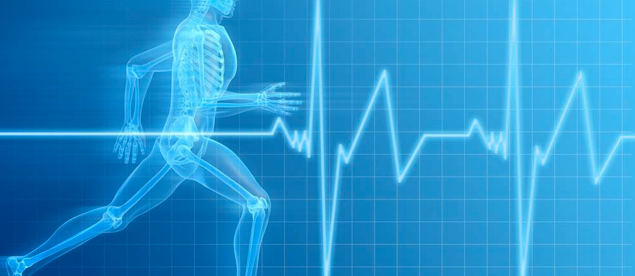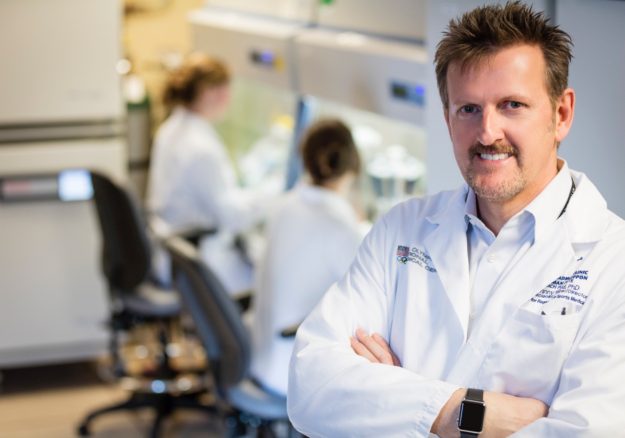Cutting Edge Research That May Speed Up Injury Recovery

When you break an arm or leg, the doctor will likely tell you the Injury Recovery typically takes six to eight weeks to heal. It is the standard answer many of us have heard before. What if that time were cut in half? What if research was being conducted right now in the small mountain town of Vail, CO that was cutting-edge and making new discoveries like healing quicker through regenerative medicine? Would you be surprised?
The Steadman Philippon Research Institute (SPRI), a research facility with world-class physicians, researches, studies and presents first-of-its-kind data on “unlocking the secrets of healing, finding cures and enhancing lives through global leadership in regenerative medicine, scientific research, innovation and education,” according to its mission statement. SPRI was founded in 1988, by orthopaedic surgeon Dr. Richard Steadman and is an independent, 501(c)(3) charitable organization, employing scientists, researchers, fellows, visiting scholars, and interns.
SPRI is the research arm of The Steadman Clinic, also headquartered in Vail. The Steadman Clinic is a world-renowned orthopaedic clinic with offices in Vail, Frisco and Edwards, CO. The practice specializes in knee, hip, shoulder, elbow, hand, spine, foot and ankle injuries, treating patients from all over the world, including recreational and professional athletes. Not only experts in diagnosis and treatment of sports-related injuries, SPRI’s research has also led to significant advances in orthopaedics.

The Director and Chief Scientific Officer, Dr. Johnny Huard
Research done at SPRI, provides the Steadman Clinic physicians with new advances in care for their patients and vice versa. The Director and Chief Scientific Officer, Dr. Johnny Huard, who joined SPRI in 2015 after more than 19 years at the University of Pittsburgh where he served as former Vice Chair for Musculoskeletal Cellular Therapeutics, Director of the Stem Cell Research Center, and Deputy Director of Cellular Therapeutics Research, is internationally recognized for his leading-edge research in the field of regenerative medicine as it relates to the musculoskeletal system. He also has expertise in gene therapy, tissue engineering, —all based on the use of muscle-derived adult stem cells.
Huard’s research dates back to the late 90’s when he discovered a cell population that could be used for multiple applications. Over time, he has discovered that stem cells from adult bone and muscle tissue can perform tissue repair. “I can extract your own stem cells and re-inject them in you and this will help heal and repair the tissues,” he said. “When those stem cells are harvested when you are young, frozen and then re-injected when you are older, you can age better.”
Down the line, Dr. Huard envisions every person having the opportunity to harvest his or her own stem cells, preferably at a young age. The cells could be frozen, stored, and then re-injected later to help those people age better, enjoy an active life, and get the best treatment when they need it. Although it may take 10 years to perfect, the procedure could literally slow down the aging process.
Dr. Huard equates his research with the likes of an iPhone 9, a phone that currently does not exist but might in the future. “I think about medicine now and 20-30 years from now,” he said. “With stem cells, we have already seen positive results with 12 patients to repair cardiac tissue and 500 patients to reduce bladder dysfunctions. Because of advances we’ve made in other areas, we may be able to go faster in sports medicine,” he said. He is also working with the Food and Drug Administration (FDA) to educate them on the technology he is working on. “We are preparing the iPhone 9 now. Safety though is the most important factor for us with the patient,” he said.
Dr. Huard’s believes his research may not just be confined to orthopaedics, and could possibly help with other diseases such as cancer, Alzheimer’s and Parkinson’s. “I am fully convinced this is the technology we will be using to help people heal faster,” he said.
To unwind and “disconnect from science” Dr. Huard enjoys skiing and was an avid boater prior to moving to Vail. Recently, he was skiing first tracks when he began talking with the people sitting on the chairlift next to him. The conversation turned to his work and became so fascinating to the skiers, they followed him into the restaurant where he was about to speak so they could hear more about his research because the topic was so interesting to them, Huard said. After all who wouldn’t want to know more about healing quicker? Perhaps one day in the near future when you break an arm or leg, and the doctor gives you a faster healing time than the usual “six to eight weeks” response you’ve come to expect, you might now know the reason why. For more information or to donate to The Steadman Philippon Research Institute go to: www.sprivail.org
by Mara Sheldon
MTN Town Magazine | We are Colorado’s Mountain Town Magazine
Copyright © 2018 MTN Town Magazine all rights reserved.
